Chalon-sur-Saône to Couches
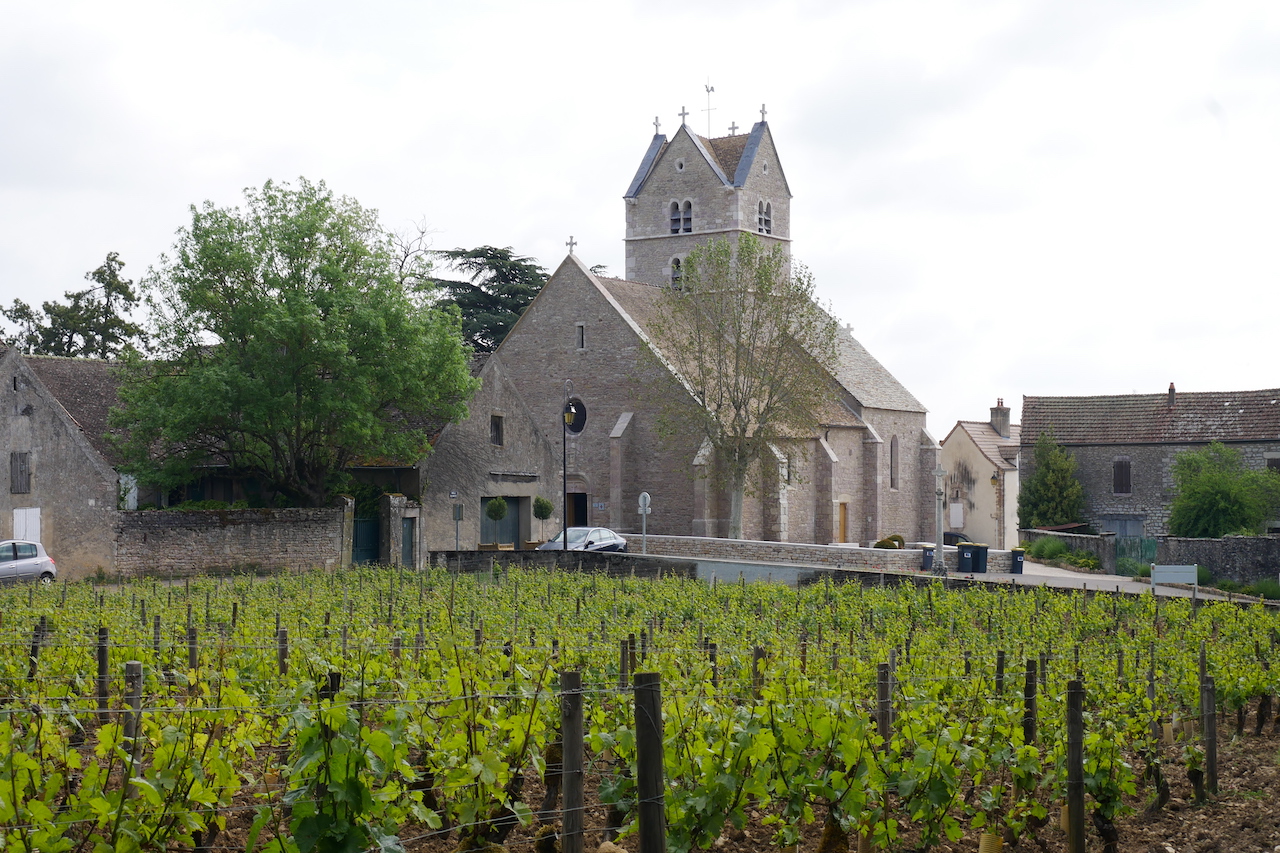
Bourgogne-Franche-Comté
11. Chalon-sur-Saône to Couches
Difficult
7h30
30,2km
+590m
-440m
Step
Embed this item to access it offline
This 30 km stage deserves to be done over two days in view of the rich heritage to be visited with the Premier Cru vineyards of the Côtes Chalonnaises and the White and Red Burgundies. The castles, some of which can be visited, blend into the hilly landscape.
The castle and the town of Couches will end this stage in a heritage apotheosis.
The castle and the town of Couches will end this stage in a heritage apotheosis.
11 points of interest
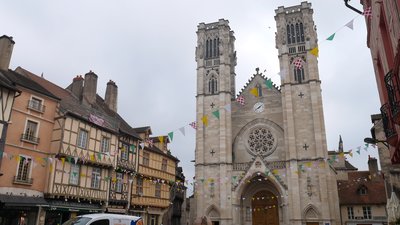
La façade de la cathédrale Saint-Vincent de Chalon-sur-Saône - Amis saint Colomban TouristSaint-Vincent Cathedral in Chalon-sur-Saône
The origin of this cathedral remains very vague. There is talk of the 4th or 5th centuries. What is known is that the first church was built on the ancient Gallo-Roman rampart and that it occupied the place of an ancient temple.
The present cathedral was built between 1090 and 1522. We owe its chronology to Abbot Salis (who died in 1970), who knew all about Saint Vincent (patron saint of winegrowers) and who had devoted part of his life to unraveling its mysteries. From this chronology, two main periods emerge: the Romanesque and the Gothic ages.
Chapelle de Cruzille - GdeLaB, Wikipedia TouristCruzille Chapel in Chatenoy-le-Royal
In the 17th century, there was a château in Cruzille, a yachting residence belonging to a wealthy Chalonnais family, the Thériat family. Gilles Thériat was master of the coaches and stagecoaches by water and by land, from Lyon to Paris and Lille.
Externally, this Chapel does not have a classical religious architecture, but looks like a simple square dovecote!
However, once through the door, one discovers a real gem: the contrast between the austerity of the walls and the richness of the interior is striking. The stucco decoration, very elaborate, evokes the work of Lepautre, Louis XIV's architect and decorator.
Since 2003, the Association of the Friends of the Chapel of Cruzille has been helping to restore and enhance the value of this Historic Monument.
Parc du château de Germolles - Amis saint Colomban HistoricalThe castle of Germolles
Located on the Via Columbani, the castle of Germolles is the best preserved of the residences of the Dukes of Burgundy. Built in the second half of the 14th century, this residence bears witness to an important page of regional history. The castle is also one of the rare examples of such residences still well preserved in France for the 14th and first half of the 15th century, where most of the princely palaces of this period have almost completely disappeared. This remarkable site evokes court life in France on the eve of the Renaissance. Today, the castle is widely open to visitors and organises a cultural season from October to June.
It was the pleasure residence of Philippe le Hardy and Marguerite de Flandres. John the Fearless, Philip the Good and Charles the Bold stayed there.
More information: Wikipedia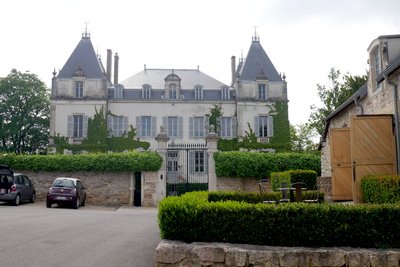
Château de Chamirey - Amis saint Colomban HistoricalChamirey Castle
Located on the Via Columbani, Chamirey Castle was built in the 18th century on a rocky spur, a privileged location in Mercurey.
The castle owes its present appearance to the towers that were built at the end of the 18th century, after a fire destroyed the chapel adjoining the castle. The property then passed from the hands of the Dupaty de Clam family to the family of the Marquis de Jouennes d'Herville. Today, Amaury and Aurore Devillard represent the fifth generation of Burgundian wine men and women. In 1934, their grandfather, the Marquis de Jouennes, as a forerunner, decided to bottle the wines of Château de Chamirey at the estate. Following him, his son-in-law, Bertrand Devillard, continued his work and enlarged the estate in the best terroirs of Mercurey to bring it to its present size of 37 hectares.
More information on the website of Château de Chamirey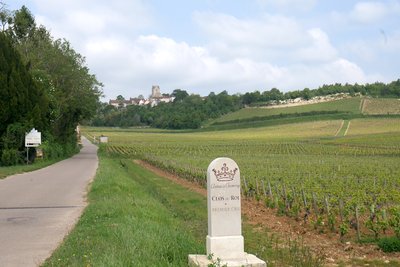
Vignoble de Mercurey - Les Amis de saint Colomban TouristVineyards of the Côtes Chalonnaises
Throughout this stage, the vineyards of the Côtes Chalonnaises accompany you on the Via Columbani. The mainly chalky soil is favourable to the Pinot Noir and Chardonnay grape varieties, as well as to the Aligoté, specific to Burgundy. The vineyards of Mercurey, Givry and Rully are made up of equal parts of pinot noir and chardonnay. Chardonnay produces white wines of which Bouzeron is the only regional AOC.
More information: Wikipedia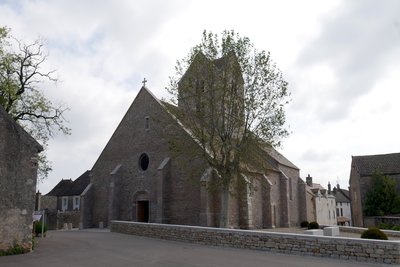
L’église Saint-Symphorien à Touches - Amis saint Colomban TouristSaint-Symphorien Church in Touches
In the 8th century, an abbey was founded. It was subjected to attacks and vexations from the lords of the neighbourhood and was attached in 1026 to the abbey of Flavigny, which established a priory.
The church was built between the 13th and 14th centuries and was classified as a Historical Monument in 1913.
The first sanctuary was founded by Eudes, lord of Montaigu in the 13th century. On the hill south of Touches des ruines attests the presence of the castle of Montaigu.
In the 14th century the first two bays replace older works. At the end of the 16th or the beginning of the 17th century, the vaulting of the first two bays of the nave and the side aisles was completed. The whitewashing dates from the 18th and 19th centuries.
Information taken from the very detailed guide available in the church.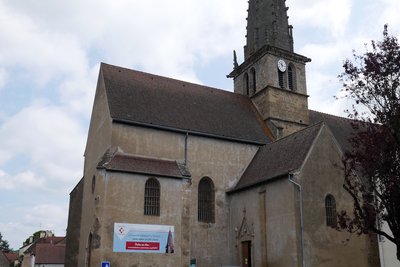
Église Saint-Léger à St-Léger-sur-Dheune - Amis saint Colomban TouristSaint-Léger Church of Saint-Léger-sur-Dheune
St. Leger's Church is located on Via Columbani, it does not attract attention at first sight. Its foundations date back to the 12th century and it was enlarged three times during the 19th century. Its stone bell tower, dating from the 15th century, is unique in Burgundy because of its mitre shape, reminding us that Saint Léger, patron saint of the parish, was bishop of Autun in 663 and imprisoned in the monastery of Luxeuil with his enemy ÈbroÏn, mayor of the Palace, around 650.
The chapel dedicated to Saint Léger houses the baptismal font, a Nevers earthenware Crucifix and a 15th century polychrome wooden altarpiece depicting three scenes from the Passion of Christ. Two sections of a triptych attributed to Gregoire Guérard, a 16th century Antwerp painter, which were exhibited at the Louvre in 2017 during the exhibition devoted to the French Renaissance.
Port de plaisance à Saint-Léger-sur-Dheune - Amis saint Colomban TouristThe Canal du Centre at Saint-Léger-sur-Dheune
The Canal du Centre, also known as the Canal du Charolais, connects the Loire and Saône valleys. It was created between 1783 and 1793 by the will of the States of Burgundy on the project of its chief engineer Émiland Gauthey. It established the junction between the Saône at Chalon-sur-Saône and the Loire at Digoin.
It was modernised at the end of the 19th century as part of the Freycinet plan. Over its 114 km, it had 64 locks on either side of the Longpendu forebay; barges could be loaded to 300 tons. The problem of water supply was solved by the gradual creation of supply reservoirs and, in the 1950s, by pumping sites.
It favoured industrialization in Dheune-Bourbince by attracting to its shores many building material companies, of which tile was the most widely distributed and ceramics was the most emblematic.
More information Wikipedia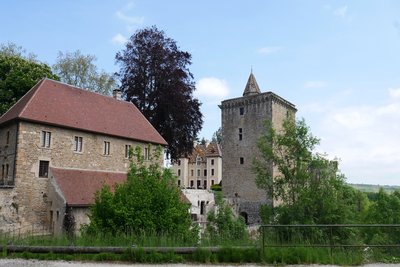
Vue générale du château de Couches - Amis saint Colomban HistoricalCastle of Couches
The Château de Couche known as Marguerite de Bourgogne is one of the ancient fortresses of the Duchy of Burgundy and was used to protect the road leading from Paris to Chalon via Autun. Its construction dates back to the 10th century as the square tower testifies. Over the centuries, a chapel and two residences have brought a lot of charm to this castle that can be visited. Famous French families have succeeded one another to embellish the estate such as the de Rochechouart family, the Montaigu family in Mercurey.
The castle offers bed and breakfast and has a vineyard: the Côtes-du-Couchois.
More details : website of Château de Couches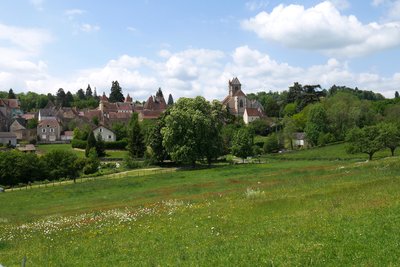
Vue de la ville de Couches dans un écrin de verdure - Amis saint Colomban HistoricalOld Centre of Couches
The former St. George's Priory, occupies the site of a Benedictine abbey founded in the 7th or 8th centuries. The abbey, destroyed in the 10th century, became a priory attached to the abbey of Flavigny.
The priory church was restored in the 15th century, then sold during the Revolution. The eastern part of the church has been preserved. Very remarkable and partly dating back to the end of the 8th century, it preserves, from the Carolingian plan, its transept, its choir, three apses enhanced by the five original apses, and a crypt known as the Cave of Miracles. The ensemble has been integrated into the town hall and you can admire the chevet by going around the town hall. The interior of the chapel is only visible during the reception at the town hall.
On the Town Hall square, the 12th century Bajole Tower was the residence of the bailiff of the priory located in the monastic enclosure of the Saint Georges priory. Today it houses a restaurant.
Nearby you can see the Guérin Tower at the end of a passage, keep to the left of the door. This military fortress was built in the 12th century to shelter the soldiers of the King of France who protects the priory. The present building dates from the 15th century.
On arriving in Couches you passed the House of the Templars, built in 1610, which served as a school for Protestant children. The Protestant cult continued clandestinely after the revocation of the Edict of Nantes. The name has nothing to do with the congregation of the Templars and indicates the names of the people who practiced the Protestant temple.
L’église Saint-Martin de Couches - Amis saint Colomban TouristSaint-Martin Church in Couches
The Abbey of Couches gave birth to the parish of which the Benedictines were the first parish priests. They put it under the name of Saint-Martin. Built in 1480, it replaced a Romanesque church. The portals and stained glass windows are in flamboyant gothic style.
The bell tower is easily identifiable by its square tower shape with a gable roof. Winged gargoyles can be seen at the four corners and, to the south, a small turret giving access to an old watchtower path.
The 4 sides are pierced with twin bays without decoration. It shelters 4 bells, one of which dates back to 1596.
The bell tower, built up to two thirds of its height, was supposed to support an arrow.
More information about Saint-Martin's church : site of the town of Couches
Description
On the square in front of the Saint-Vincent cathedral, cross the square, rue Saint-Vincent, rue du Chatelet, right rue au Change, cross the square of the Hôtel de Ville, right, rue Denon, first left, rue Thiard, right rue Michelet. Cross the Boulevard de la République.
- Turn left on avenue Boucicaut for 1600 meters.
- Turn left to cross the Maréchal Franchet Desperey roundabout, rue de la Guerlande, first left, rue de la Jonchère, turn left into the tunnel under the motorway, rue du Pont go up on the bridge to cross the railway, right rue de la Liberté, right rue de Cruzille.
- First on the left chemin de la forêt take the dirt road in the continuity of the asphalt road.
- Left on the forest road and first on the right, left in front of the Maison forestière de Marloux, cross the Route d'Autun towards Dracy-le-Fort, second street on the right and the dirt road after the last houses.
- Rue du Pont Grand, turn left on Rue de la Libération immediately right, Rue des Carrières, second street on the left, Rue du Petit Puit, second road on the right, cross the D48, take the road opposite, Chemin du Champ Perdrix on the right, Rue du Champ Ladoit, cross the road to Saint-Martin, Rue du Champ Ladoit, Rue du Clot du Roy.
- At the entrance of Touches, take the first road on the left, rue du Liard. At the calvary turn left on the dirt road, right at the crossroads, left on D978 and first right crossing the departmental road.
- Turn right on asphalt road then left to continue on the dirt track in front of the farm, left at the crossroads, rue des Vignes de la Chaume, first right, rue du Tartre.
- At the crossroads, turn left into rue des Roches Pendantes, turn right into rue du Quartier, then left into rue du Champ de l'Orme, continue on the asphalt road, turning left at the third crossroads and take the dirt road on the left.
- At Tronchat take the first grassy path on the left, go around the field, on the right chemin des Fontenelles, rue du Champ du Crot, on the left rue Thernaud in the direction of the canal.
- Turn left rue du 8 mai 1945, right to cross the canal rue du Pont, rue de la gare, cross the railway, route de Couches after the right turn take the left path between two houses.
- Les Vezeaux, rue des Chante Renards, at the riding school turn left, go down towards the Château de Couches, in the courtyard of the Château take the road on the left then take the D978 to arrive in the centre of Couches.
- Departure : Saint-Vincent Cathedral, place Saint-Vincent, 71 100 Chalon-sur-Saône
- Arrival : Saint-Martin Church, 2 place de l’Église, 71 490 Couches
- Towns crossed : Bourgogne-Franche-Comté
Altimetric profile
Transport
Report a problem or an error
If you have found an error on this page or if you have noticed any problems during your hike, please report them to us here:









